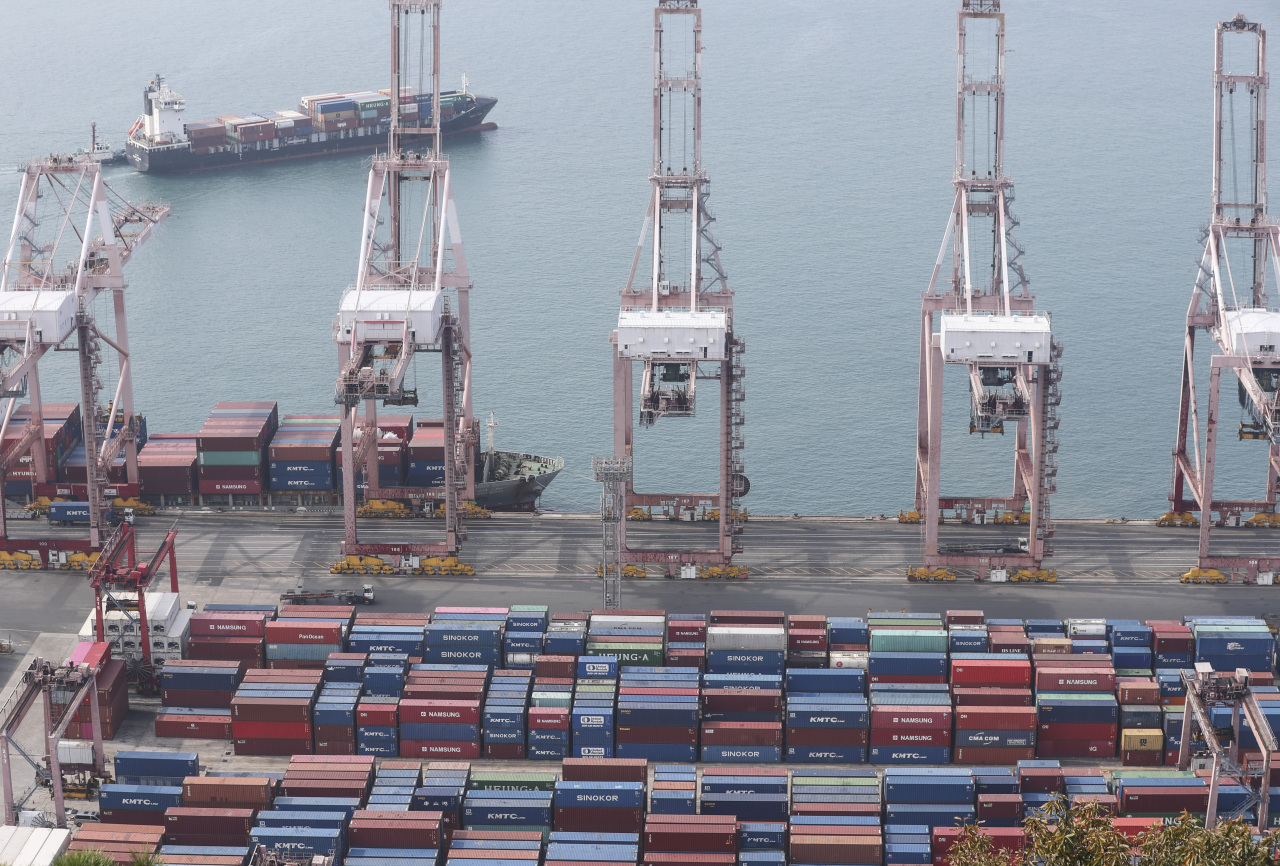Amid fast-growing national debt, potential GDP growth to hit near zero
By Park Han-naPublished : Nov. 8, 2021 - 16:14

South Korea is expected to see its national debt grow at the fastest clip relative to the size of the economy among major countries, while its growth rate of potential output per capita will fall to the near-zero range without policy changes, according to economic reports Monday.
Sparking concerns over a further loss of momentum for the country’s economy, the International Monetary Fund estimated that Korea’s general government gross debt to gross domestic product would increase to 66.7 percent by 2026, up 15.4 percentage points from this year’s figure. It marks the fastest growth among 35 advanced economies as classified by the IMF and the only country expected to see its rate increase by over 10 percentage points.
During the same period, the debt-to-GDP ratio of the 35 economies is expected to drop by 3 percentage points from 121.6 percent to 118.6 percent, meaning other developed countries are expected to show fiscal improvement while Korea’s debt will surge rapidly over the next five years.
The national debt ratio of Asia’s fourth-largest economy is expected to be about half the average of the Group of 20 advanced economies at 130.5 percent in 2026. But concerns are growing of the debt ratio continuing to grow as fiscal spending increases in the course of responding to COVID-19, while welfare expenditure is expected to increase in the face of low fertility and an aging population.
Each nation has a unique economic structure and debt level it can handle, said Lee In-ho, an economics professor at Seoul National University, citing Japan whose debt-to-GDP ratio has exceeded 200 percent since 2010 and continues to expand.
“But Korea has maintained its fiscal soundness with a low debt level that fits its economic characteristics whereby private sector investment played a role of catalyst for economic growth,” he said.
The fiscal support deployed during the COVID-19 crisis, centering on consumption coupons and cash handouts, has national debt growing rapidly and hampers stimulus programs that bolster investment, he added.
The country’s debt-to-GDP ratio, which stood at 47.9 percent last year, will rise to 51.3 percent this year and 55.1 percent next year. The government has announced an additional 14.9 trillion won ($12.57 billion) and 35 trillion won for this year’s first and second supplementary budgets, respectively.
According to another report by the Organization for Economic Cooperation and Development, the Korean economy is also gradually losing its vitality amid deteriorating fiscal health in the mid- and long-term.
The OECD estimated that Korea’s potential real GDP per capita growth rate for 2030-2060 would be 0.8 percent per year, ranking it the lowest among 38 OECD countries in its economic policy paper.
“Following the pandemic-induced drop and rebound, trend growth is projected to resume its gradual slowdown in both OECD and G-20 emerging economies,” said the report titled “The long game: Fiscal outlooks to 2060 underline need for structural reform.”
Potential gross domestic product is the level of output that an economy can produce at a constant inflation rate.
Between 2020 and 2030, the growth rate is higher than the OECD average of 1.3 percent, but in the 2030-2060 period it is projected to fall below the OECD average of 1.1 percent, ranking last among 38 countries, alongside Canada, which will also see 0.8 percent annual growth.
“Trend growth rates have generally declined due to demographic change and a slowdown in productivity growth and they are projected to keep weakening in the decades ahead in a no-policy change scenario.” It added.
This is lower than 1 percent -- the average of the G-20 developed countries, which includes Korea. The US and Japan’s per capita potential GDP growth rates for 2030-2060 are estimated to be 1 percent and 1.1 percent, respectively.







![[Graphic News] More Koreans say they plan long-distance trips this year](http://res.heraldm.com/phpwas/restmb_idxmake.php?idx=644&simg=/content/image/2024/04/17/20240417050828_0.gif&u=)
![[KH Explains] Hyundai's full hybrid edge to pay off amid slow transition to pure EVs](http://res.heraldm.com/phpwas/restmb_idxmake.php?idx=644&simg=/content/image/2024/04/18/20240418050645_0.jpg&u=20240419100350)






![[From the Scene] Monks, Buddhists hail return of remains of Buddhas](http://res.heraldm.com/phpwas/restmb_idxmake.php?idx=652&simg=/content/image/2024/04/19/20240419050617_0.jpg&u=20240419175937)

![[KH Explains] Hyundai's full hybrid edge to pay off amid slow transition to pure EVs](http://res.heraldm.com/phpwas/restmb_idxmake.php?idx=652&simg=/content/image/2024/04/18/20240418050645_0.jpg&u=20240419100350)

![[Today’s K-pop] Illit drops debut single remix](http://res.heraldm.com/phpwas/restmb_idxmake.php?idx=642&simg=/content/image/2024/04/19/20240419050612_0.jpg&u=)